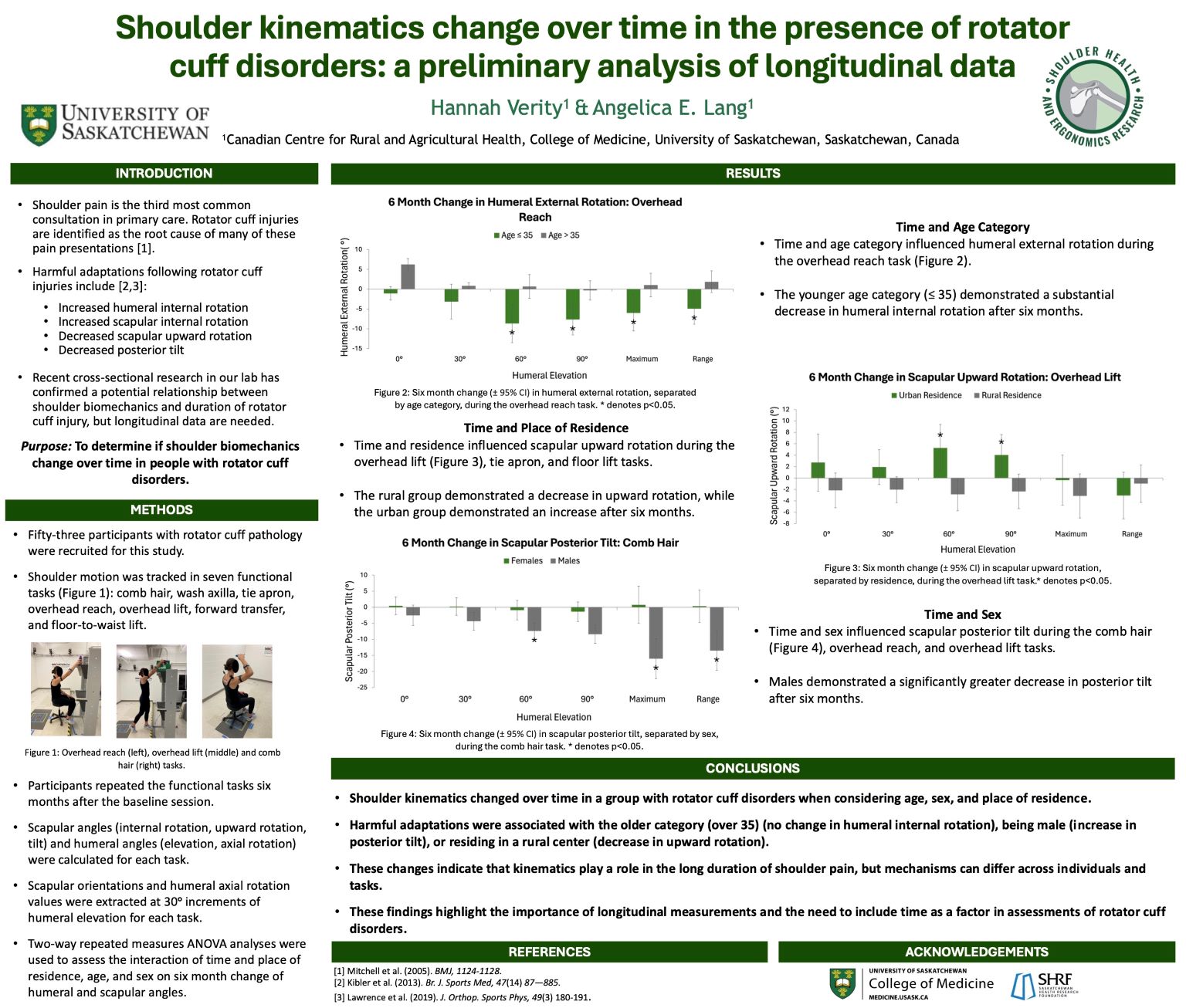
Shoulder kinematics change over time in the presence of rotator cuff disorders: a preliminary analysis of longitudinal data
Hannah Verity
Background: Shoulder pain, often caused by rotator cuff injuries, is the third most common consultation in primary care. Recent cross-sectional research has confirmed a potential relationship between shoulder biomechanics and duration of rotator cuff injury, but true longitudinal data are needed.
Purpose: To determine if shoulder biomechanics change over time in people with rotator cuff disorders.
Hypothesis: Shoulder kinematics will change over time and changes will be influenced by individual characteristics.
Methods: Scapular and humeral motion of participants with shoulder pain was assessed during seven functional tasks in two sessions: baseline and 6-months. Two-way repeated measures ANOVA analyses were used to assess the interaction of time and individual characteristics (residence, age, sex) on six month change in humeral and scapular angles.
Results: Scapular movement and humeral rotation changed between sessions. More harmful adaptations were associated with the older category (over 35), being male, or residing in a rural center.
Conclusions: These results suggest that kinematics change over time in a group with shoulder pain in a manner that could contribute to lasting injuries. These findings highlight the importance of longitudinal measurements and the need to include time as a factor in assessments of rotator cuff disorders.
